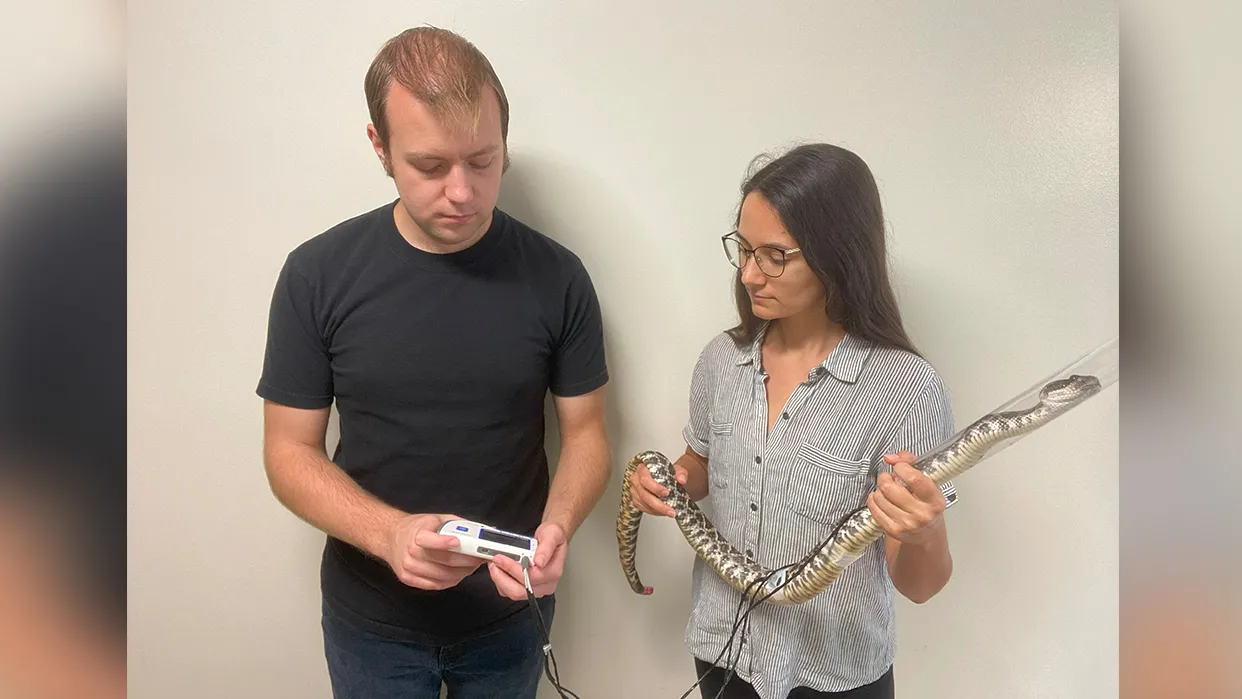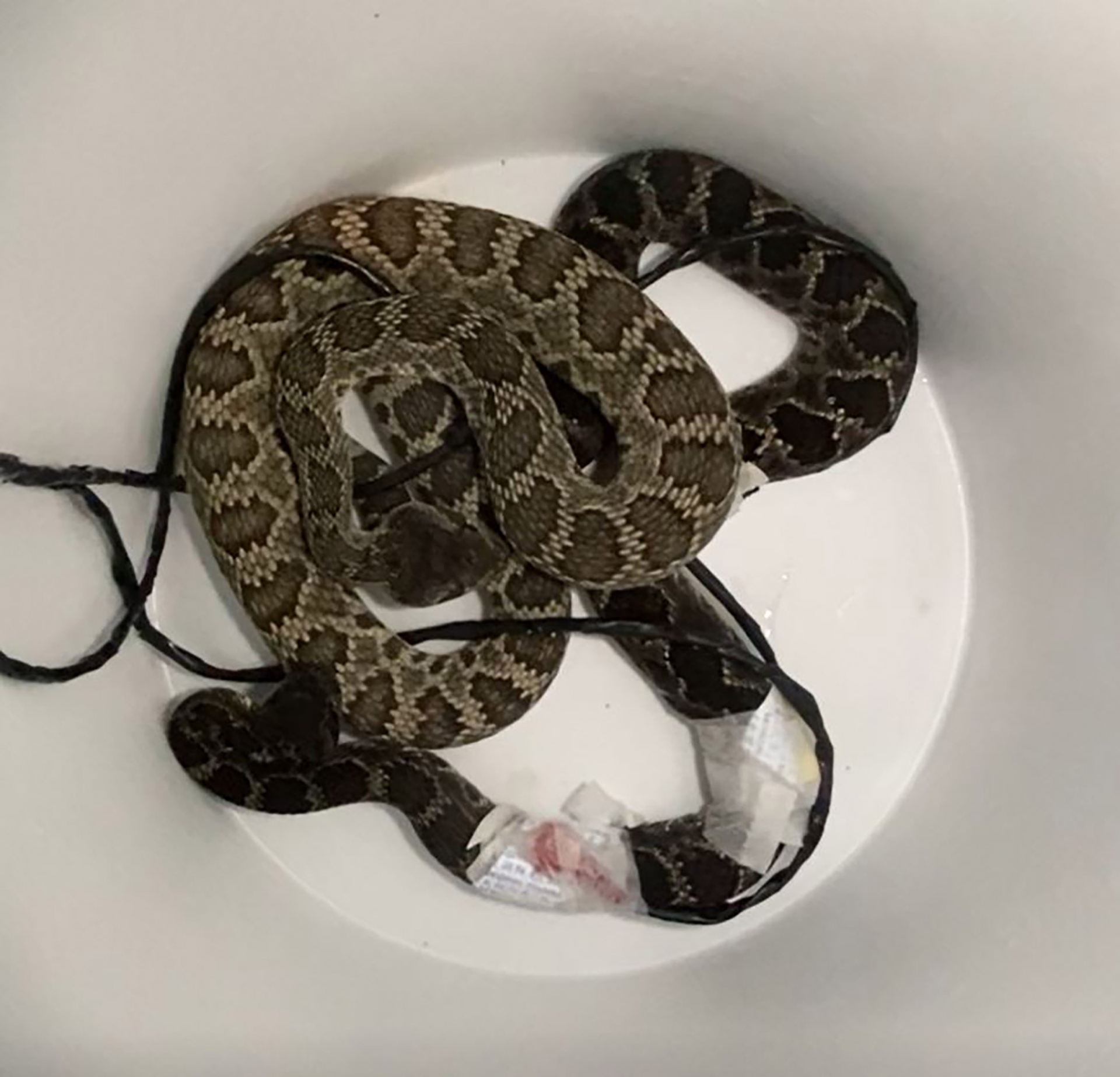Alan Llavore | Office of Strategic Communication | (909) 537-5007 | allavore@csusb.edu

Cal State San Bernardino assistant professor of biology Bree Putman is part of a groundbreaking study published July 6 in the journal Frontiers in Ethology, where researchers discovered for the first time evidence of social buffering – a reduction in stress experienced by animals in the presence of a companion – in a reptilian species.
The study, conducted on southern Pacific rattlesnakes (Crotalus helleri), challenges the notion that reptiles are asocial creatures and expands our knowledge of social behavior across different animal groups.
“People don’t normally think of reptiles, let alone snakes, as being social creatures,” said Putman, who served as a co-author of the study. “But we know that rattlesnakes can den communally in the winter, recognize kin, and have maternal attendance of young. So, it is not entirely surprising that being with a companion reduces their stress response. It’s just that no one has investigated it before.”

Social buffering has long been recognized in highly social animals such as birds and mammals. It refers to the phenomenon where the presence of a companion reduces the effects of stress on an organism. However, until now, social buffering had not been reported in reptiles. After observing that if two or more snakes were in a bucket during transportation after capture, they appeared to rattle less than if alone. Scientists at Loma Linda University and Cal State San Bernardino sought to investigate whether rattlesnakes would exhibit this intriguing phenomenon.
The study involved 25 adult wild-caught rattlesnakes. Researchers subjected each snake to a standardized disturbance while monitoring its heart rate. The experiment compared heart rate increases during the disturbance when the snakes were alone, in the presence of a rope (inanimate object control), and in the presence of a same-sex companion. The results were exciting.

The presence of a companion significantly reduced emotional tachycardia (heart rate increase) following the disturbance, indicating the presence of social buffering in rattlesnakes. “This challenges the traditional view of reptiles as solitary animals and sheds light on the complexity of their social behavior,” said Chelsea Martin, a Ph.D. candidate at Loma Linda University and lead author of the study. “It is my hope that this research will help shift the general public’s view on rattlesnakes, which are too often marginalized.”
Additionally, Martin and her team investigated whether montane snakes, which overwinter communally, would exhibit a greater propensity for social buffering compared to lowland snakes, which typically overwinter alone. However, no significant difference in social buffering was observed between the two populations. Finally, the researchers also investigated whether social buffering would be more pronounced in females, as they often aggregate during gestation and exhibit maternal care toward their offspring. However, no difference in emotional tachycardia was found between male and female rattlesnakes, indicating that both sexes experience social buffering to a similar extent under the conditions tested.
These groundbreaking findings have important implications for our understanding of the adaptive roles of social behavior in animals. While social buffering is extensively studied in animals such as primates and humans, this study demonstrates its presence in reptiles, expanding our knowledge of this phenomenon across different animal groups. Moreover, the findings may have practical applications in the management, transportation and captive breeding programs of reptiles, helping to reduce stress and improve welfare in animals.
The study represents a significant step forward in our understanding of social behavior and stress regulation in reptiles. Martin and her team plan to investigate these behaviors further by testing how a known companion regulates stress compared to an unknown individual.